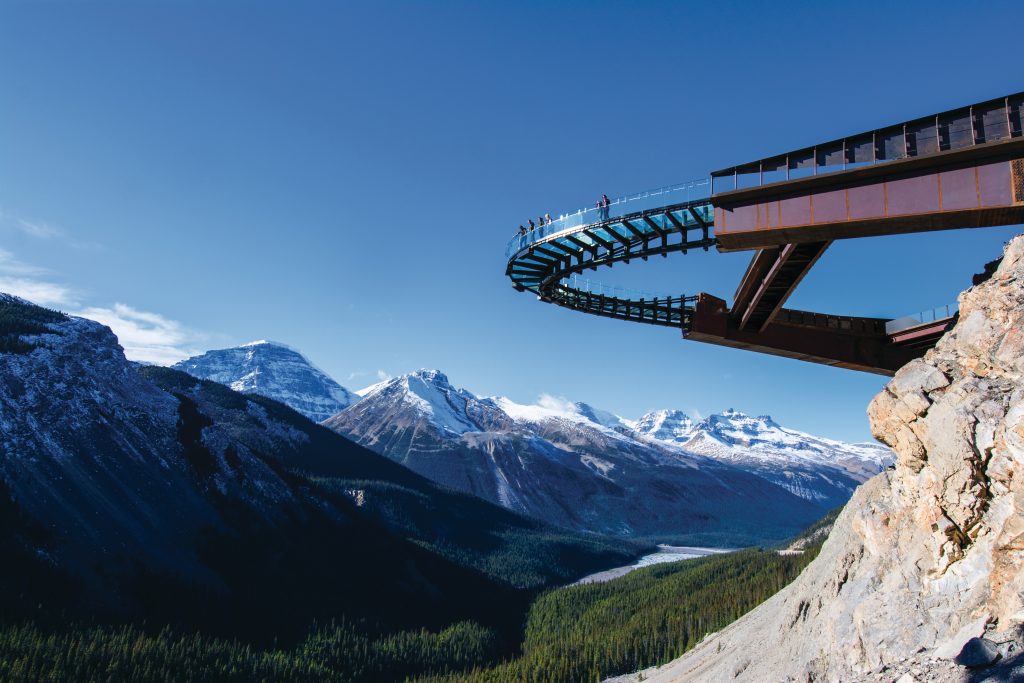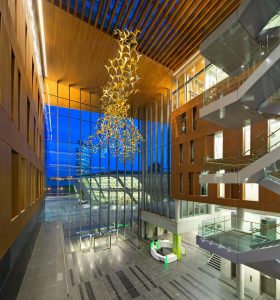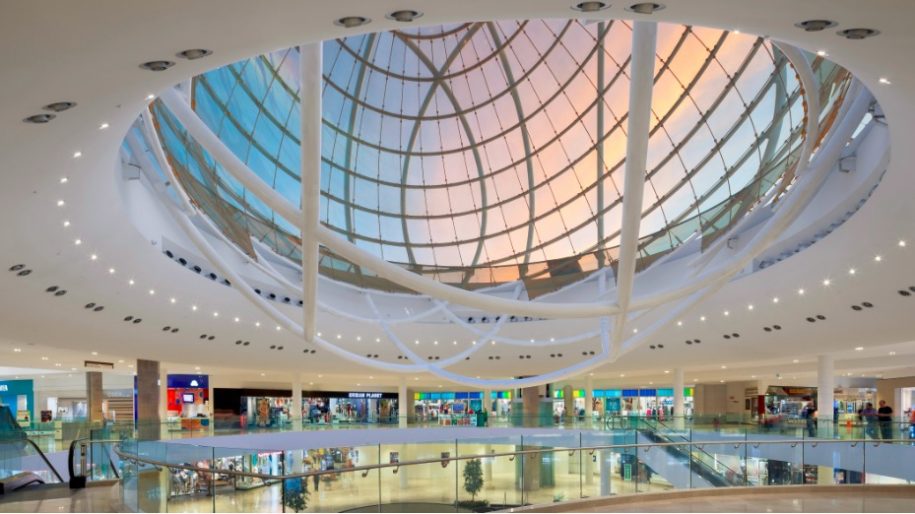When it comes to building materials, there is truly no substitute for glass. Timeless and elegant, glass provides beauty and translucence to indoor spaces in a way no other material can.
Although the art of glass-making dates back a few thousand years, it first emerged as a structural material in the 17th century, finding a permanent place in architecture in the 1830s. Visitors to France’s renowned Palace of Versailles can still marvel at some of the earliest examples of modern greenhouses and skylights, while London’s Crystal Palace is considered the world’s first large-scale glass construction.
Today, glass is all around us, having countless applications in design. From Barcelona to Tokyo, New York to Beijing, it’s no longer rare to see entire skyscrapers, museums, cathedrals and office towers made predominantly of glass.
Kevin Zwaagstra, a project engineer with RJC Engineers, has been specializing in structural glass since 2015. A few of his noteworthy projects include: Toronto’s Eglinton Crosstown LRT stations, numerous retail pedestrian bridges, and Calgary’s award-winning Studio Bell, home of the National Music Centre.
 But the project Zwaagstra says best showcases the beauty and structural capabilities of glass is the award-winning Columbia Icefield Skywalk in Jasper, Alberta—a cliff-edge walkway that juts out over the spectacular Sunwapta Valley. “It’s surreal to be projected off a sheer cliff face with nothing but glass under your feet,” he says of the popular tourist attraction. “No other material can deliver an experience like that.”
But the project Zwaagstra says best showcases the beauty and structural capabilities of glass is the award-winning Columbia Icefield Skywalk in Jasper, Alberta—a cliff-edge walkway that juts out over the spectacular Sunwapta Valley. “It’s surreal to be projected off a sheer cliff face with nothing but glass under your feet,” he says of the popular tourist attraction. “No other material can deliver an experience like that.”
Risks, rewards and unique features
From the way it transmits light, to the way it makes enclosures feel exponentially bigger, the aesthetic appeal of glass can’t be denied. But working with it isn’t easy. As Zwaagstra points out, “Glass is delicate. It needs to be handled and cut with precision. Plus, it’s a horrible insulator. In the winter it leaks heat and the summer it turns indoor spaces into greenhouses.”
Other disadvantages include: the expense of it as a building material; the fragility of it when subject to stress; and, unlike other substances that bend, warp, or crack over time, glass can shatter, causing serious injury to anyone in its midst.
“Glass doesn’t have the same failure characteristics as other materials, like steel, wood or concrete,” says Zwaagstra. “It is considered “stochastic”, meaning there’s a very high probability of failure and serious consequences should that happen.”
Fortunately, technology and innovation are helping to address some of these ‘glaring’ limitations. While triple glazing can reduce energy loss, “interlayers” can be added between glass panes to limit the sun’s heat and keep panels from shattering when broken. These days there are even fire-retardant interlayers, which Zwaagstra considers a great step forward. “A few decades ago, many of these options didn’t exist. But thanks to new technology, glass is becoming more viable as a building material in terms of constructability, safety, and even cost.”
Knowledge on the rise
Another benefit today is that we know more about the characteristics and foibles of glass, thanks to the meticulous testing and exhaustive research by structural engineers like Zwaagstra. As more and more projects are completed and critical data compiled, new guidelines and restrictions are emerging, giving key decision-makers (i.e. building owners and architects) a far better handle of how and where to best use glass in design.
“Glass is brittle and unpredictable,” Zwaagstra warns. “Whether it’s used in stairways, skylights, balconies or balustrades, there’s no room for failure. Conducting thorough tests, knowing with certainty what will happen if it breaks and building in redundancies to prevent disaster—it’s all part of the process of creating safe, usable glass structures for the long-term.”
Sustainability factor
With climate change and energy reduction increasingly of concern to both building owners and tenants, somehow the appeal of glass isn’t diminishing. The reason? Simply, no other building material can produce the same stunning effect.

Surrey Civic Centre
“Glass adds that wow-factor,” Zwaagstra says. “That’s why you see it often limited to those high impact areas where it will get the most bang for its buck—entrances and lobbies, canopies and walkways. When used locally and smartly, even buildings with high sustainability ratings can incorporate glass without lowering their scores.”
And as the applications and appetite for glass continue to expand, and as technology and our understanding of it evolves day-by-day, visionary designers and scrupulous engineers are working hard toward pushing the boundaries of what this unique material can achieve.
But certainly one thing remains clear: glass will always have a place in architecture.
Kevin Zwaagstra is a project engineer with RJC Engineers. Connect with him directly or find out more about the unique uses and merits of glass at www.rjc.ca
Top Image: Erin Mills Town Centre







